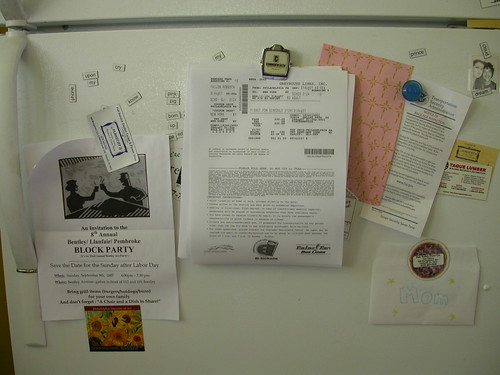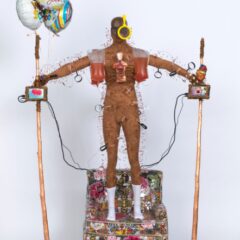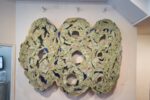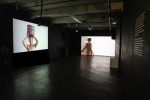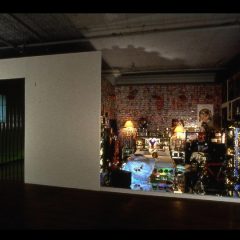[This week’s Weekly has my essay on bulletin boards as art. Below is the copy with a picture. I’ll put another picture in later. And if you have a picture of your bulletin board/refrigerator art, why not send it in and we’ll run a little photo post about your art statements.]
Pin-up Artists
Cubicles are installations by and for the people.
Somewhere in your personal space—the kitchen, office, bedroom, hallway—there’s a bulletin board holding notes, postcards, photos, a calendar or other miscellanea that help organize and define you. Whether you’re conscious of it or not, you’ve designed and authored personal installation art.
The organic DIY aesthetic of your hodge-podge picture-and-word-art creation is actually mimicked by artists who recognize ground-up personal statements as more authentic and richer reflections of our times than something cast from bronze and costing thousands of dollars.
The bulletin board aesthetic is hot right now in the art world. It all started with installation art—the grouping together of disparate or related objects to make an artwork. Installation art came about in the 1980s when artists sought to contrast authenticity with the slick commercialism and superficiality of the art world. Showing real objects like mattresses, car parts, chairs, tables and junk, it was an attempt to say, “Look, art is everywhere—in the office, the street, any apartment or house.” The displays were like exploded 3-D bulletin boards you could walk through.
In his 2004 Trials and Turbulence installation at the ICA, Pepón Osorio created a homage to the bulletin board in his picture-perfect office cubicles. One of Osorio’s points is that within the least likely confines humans will aspire to make beauty.

Pepon Osorio’s Trials and Turbulence, ICA. Photo by Aaron Igler.
Nowadays increasing numbers of artists are pinning things on walls, bulletin board-style, and calling it a wrap. Raymond Pettibon’s salon-style hangings of his cartoon poster drawings are one example. Georges Adeagbo, a Benin artist whose Abraham—Friend of God was acquired recently by the Philadelphia Museum of Art, is another.
Abraham, which debuted at PMA last winter, was the artist’s life as a bulletin board. Four walls and a floor were covered with handwritten notes, news clippings from his stays in various cities around the globe, postcards, book pages, straws, matchbooks and napkins from restaurants he’d eaten at, and some hand-carved items that added a decorative touch. The museum purchase of Adeagbo’s piece is confirmation that this type of scattered wall art has made it into the art history canon.
We live in a world dominated by electronically produced imagery packaged to sell cars, widgets and potato chips. Personal space like the office cubicle is the last frontier for expressing something idiosyncratic and noncommercial. We can’t control what’s on TV and most of us aren’t producing content for YouTube, but the bulletin board and refrigerator are there to be conquered. And the only tools you need are pushpins or magnets and a little imagination.
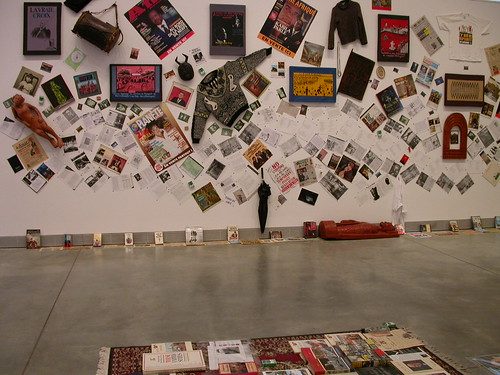
Nineteenth-century critic John Ruskin believed everyone could make art if only they applied themselves. “All great art is the work of the whole living creature, body and soul,” he said, “and chiefly of the soul.” Tack your soul on the wall and you may create something truly great.


